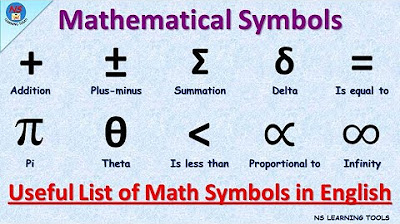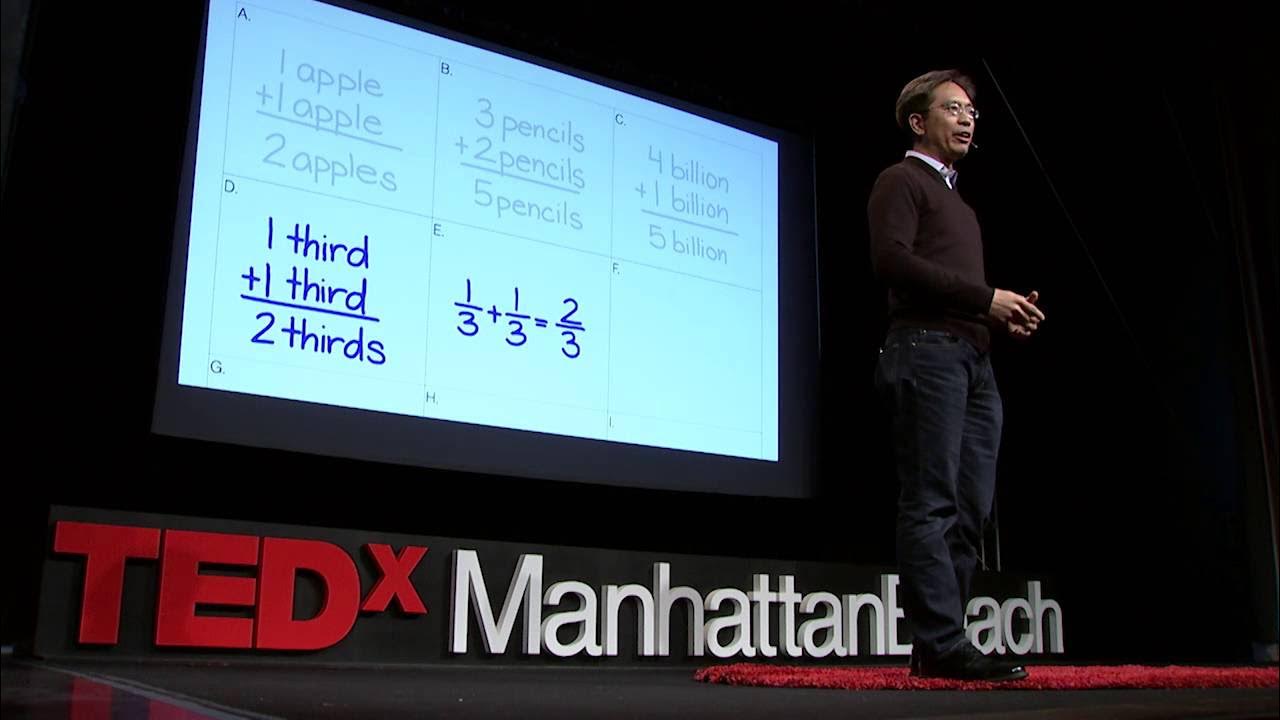Math Symbols, Cardinal Numbers, 2D Shapes, 3D Shapes
TLDRThis video script offers an educational journey into the world of mathematics, covering essential math terminology including cardinal numbers, symbols, and various 2D and 3D shapes. It emphasizes the relevance of math in numerous fields, not just for math majors or engineers. The script aims to demystify mathematical language, making equations more accessible and less intimidating for viewers, encouraging them to excel in their math studies.
Takeaways
- 📚 The video script introduces various mathematical terminology, emphasizing its relevance beyond just math majors and engineers.
- 🔢 It provides English terms for cardinal numbers, ranging from single digits to large numbers like one million and one thousand.
- 🎵 The script is interspersed with music, suggesting an engaging and possibly educational tone for the video.
- 📐 The video covers 2D and 3D shapes, including common ones like squares and circles, as well as more complex shapes like dodecahedrons and icosahedrons.
- 🔄 The script lists mathematical symbols such as the ampersand, divided by, dollar sign, equal to, and infinity, among others.
- ✅ It mentions operations like 'multiplied by' and 'divided by', indicating the inclusion of basic arithmetic operations in the discussion.
- 📈 The video aims to demystify mathematical equations, suggesting that understanding the terminology can make them more approachable.
- 💼 The script implies that math terminology is applicable in almost every field, with the possible exception of creative writing.
- 🤔 It challenges the viewer to remember the terms listed, creating an element of memorization and learning.
- 👍 The video concludes with well-wishes for the viewer's math studies, indicating a supportive and encouraging message.
- 🌐 The script does not explicitly mention, but implies the importance of math in various professional and academic contexts.
Q & A
What is the purpose of the video mentioned in the script?
-The purpose of the video is to teach various mathematical terms, symbols, cardinal numbers, and names of 2D and 3D shapes, emphasizing their relevance across different fields of employment.
Why might math terminology be important outside of math and engineering?
-Math terminology is important outside of math and engineering because it appears in almost every field of employment, aiding in clear and precise communication of quantitative concepts.
What are cardinal numbers as mentioned in the script?
-Cardinal numbers are the numbers that represent quantity, such as 'eight', 'fifteen', 'one hundred', etc., which are used to count objects or express amounts.
Can you name some of the 2D shapes mentioned in the script?
-Some of the 2D shapes mentioned are circle, rectangle, square, triangle, and hexagon.
What are some examples of 3D shapes listed in the script?
-Examples of 3D shapes listed include cube, sphere, pyramid, and tetrahedron.
What is the significance of the word 'maths' in the script?
-The word 'maths' is used to represent the subject of mathematics, with the script noting that it is commonly used in Britain as opposed to 'math' in American English.
What mathematical symbols are introduced in the script?
-The script introduces symbols such as the ampersand (&), divided by (/), dollar sign ($), equal to (=), exclamation mark (!), hyphen (-), infinity (∞), multiplied by (×), and percent (%).
How many cardinal numbers are specifically mentioned in the script?
-The script mentions a variety of cardinal numbers, but does not specify an exact count within the provided transcript.
What is the relevance of the phrase 'maybe you think this is interesting only for math majors and for engineers' in the script?
-This phrase challenges the assumption that mathematical terminology is only relevant to math majors and engineers, suggesting its broader application.
What is the final message conveyed to the viewer in the script?
-The final message is an encouragement to view mathematical equations with a new understanding, making them less intimidating and more accessible.
How does the script conclude?
-The script concludes with a musical note and the phrase 'good luck with your math studies', wishing the viewer success in their mathematical endeavors.
Outlines
📚 Introduction to Math Terminology
This paragraph introduces the video's focus on various mathematical terms and concepts, emphasizing their relevance across different fields, not just for math majors and engineers. It provides a list of cardinal numbers, mathematical symbols, and a teaser of shapes to be discussed, setting the stage for a comprehensive exploration of math vocabulary.
📐 Exploring 2D and 3D Shapes
The second paragraph delves into the specifics of two- and three-dimensional shapes, listing various geometric figures such as circles, heptagons, hexagons, and more. It also includes three-dimensional shapes like cubes, dodecahedrons, and spheres, aiming to demystify mathematical equations for the viewer. The paragraph concludes with an encouraging note for those studying math, suggesting that understanding these terms will make equations more comprehensible.
Mindmap
Keywords
💡Math Symbols
💡Cardinal Numbers
💡2D Shapes
💡3D Shapes
💡Ampersand
💡Infinity
💡Multiplication
💡Circle
💡Rectangle
💡Cube
💡Sphere
Highlights
Introduction to various aspects of math terminology
English terms for math symbols
Cardinal numbers in English
Shapes - 2D and 3D
Relevance of math terminology in various fields of employment
Learning math words for better understanding of mathematical equations
Listing of cardinal numbers from 8 to 105
Presentation of large numbers like one million and one thousand
Introduction of mathematical symbols like ampersand, divided by, dollar sign, etc.
Explanation of infinity and multiplication symbols
Listing of 2D shapes including circle, heptagon, hexagon, and more
Introduction to 3D shapes like cube, dodecahedron, hemisphere, etc.
Highlighting the importance of recognizing math symbols for better comprehension
Encouragement to improve math studies with the learned terminology
Final note on the potential difficulty but importance of understanding math symbols
Transcripts
Browse More Related Video

GED MATH 2024 Preparation Course - from the Absolute Beginning to Advanced Level

List of Mathematical Symbols in English | Math Symbols Vocabulary | 65 Mathematics Symbols

Free English Class! Topic: Math! ➗➕➖ (Lesson Only)

Math Antics - Volume

Math isn't hard, it's a language | Randy Palisoc | TEDxManhattanBeach

Algebra SYSTEM WORD PROBLEM – Let’s solve it step-by-step...
5.0 / 5 (0 votes)
Thanks for rating: